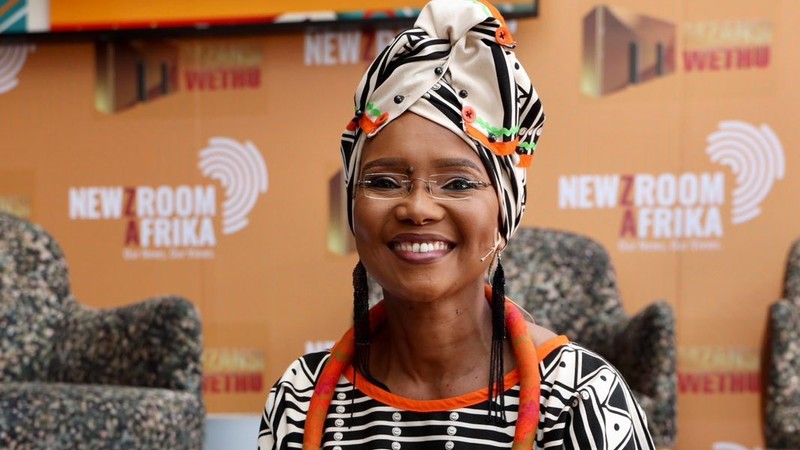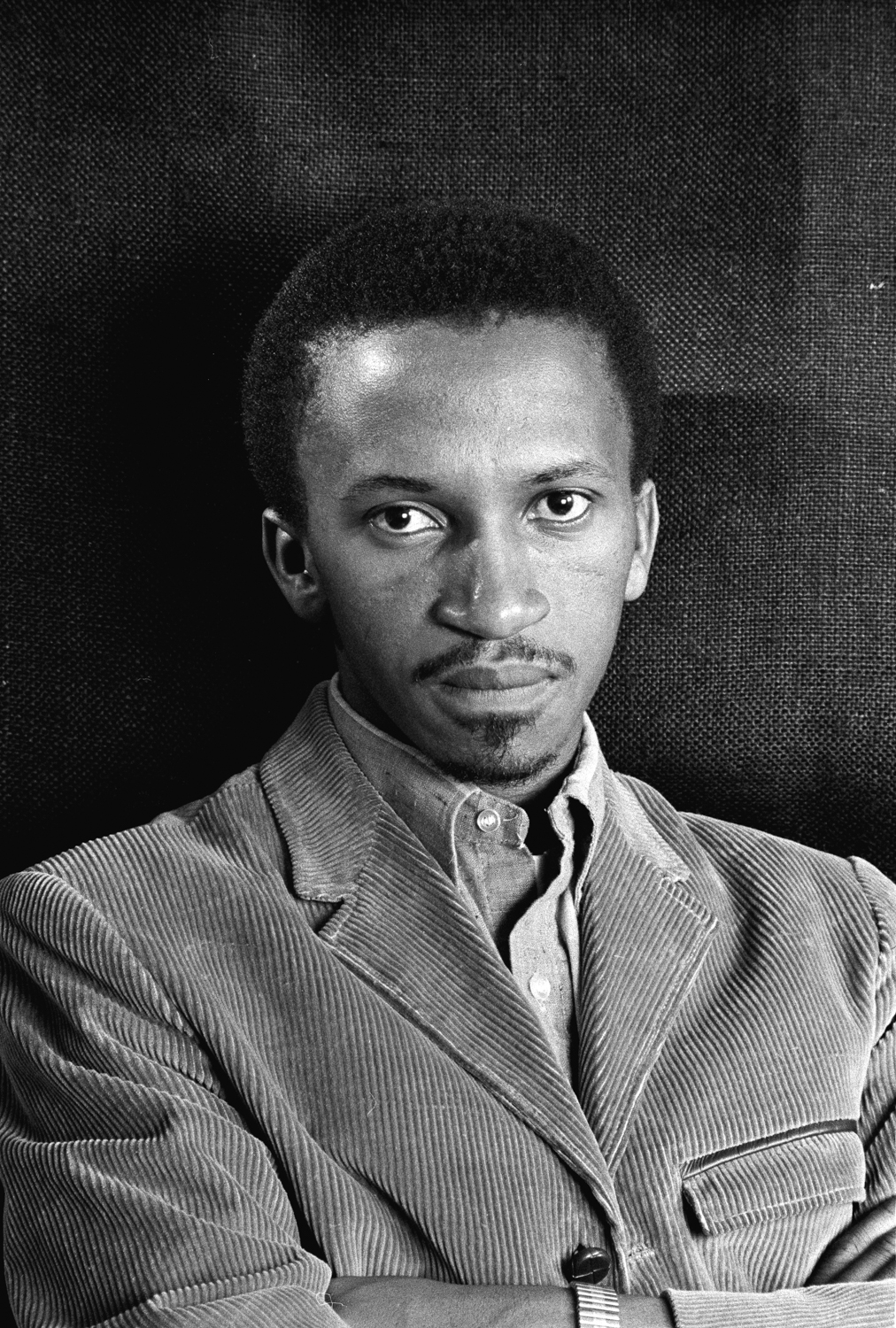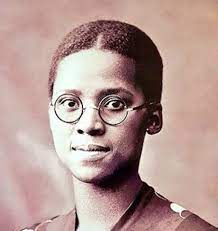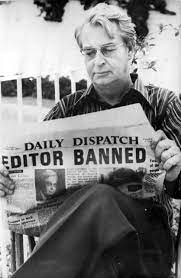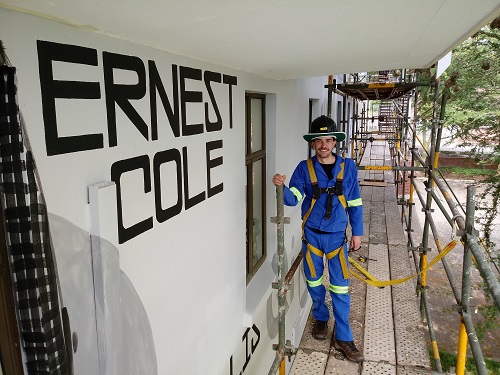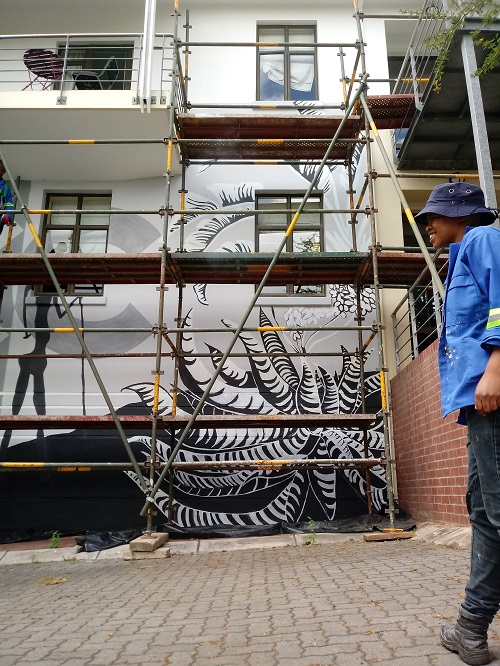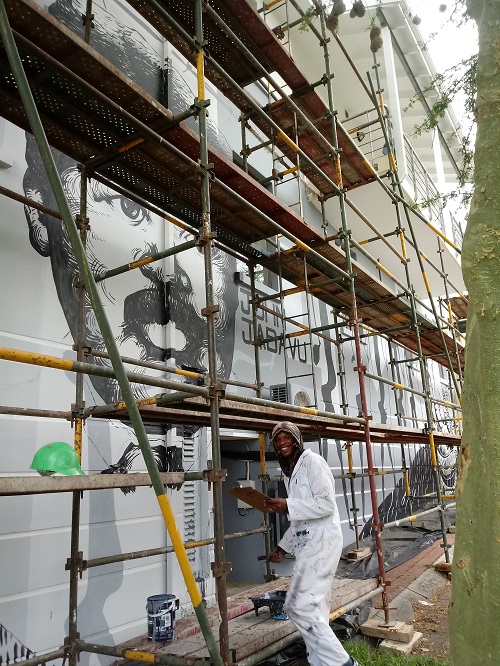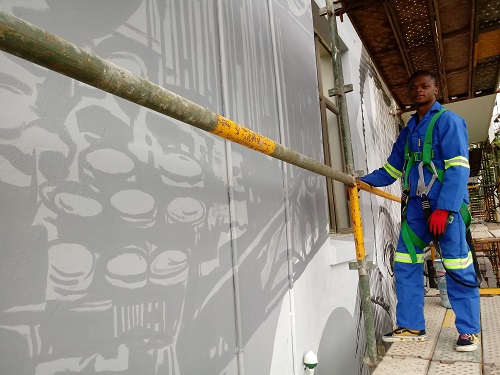THE SCHOOL OF JMS AT RHODES UNIVERSITY: MURAL

JMS50
This year is the 50th anniversary of Rhodes University’s School of Journalism and Media Studies. To mark 2022 as a historic moment, JMS staff have put in place a range of activities that enable us to revisit the School’s history, to think about what kind of institution we have become, and to imagine what the next fifty years of our existence might entail. The objective is not simply to celebrate (or critique) the past. Rather, the broader purpose is to recognise that this moment offers us an opportunity to envision how we might remain relevant to our rapidly changing social, cultural and political environment while we respond to the techno-social revolutions taking place in the media landscape.
We have envisaged this programme as a way to reflect on the social and media histories that have shaped us and our approaches to journalism and media education, research and production. It is also an opportunity to imagine possible futures for our School and the ways in which our work might contribute to these. In thinking about these objectives we have taken into consideration the relationships that we have had – and wish to reignite and develop – with our communities and partners. In particular, recognising the role they have played in the School’s development over the years, we wish to strengthen our ties with partners and communities in Makhanda and the Eastern Cape more broadly, with the aim of benefiting them in some way.
ABOUT THE MURAL
For our 50th anniversary in 2022, the School of Journalism and Media Studies wanted to look back into a rich history – one in which over the years we have graduated 5 000 students from this School who have made significant contributions to the media locally, nationally and internationally. But we are also looking forward to a future of even more interesting storytelling in which, who our current and future students are and what they will do, will continue to have an important impact. To capture this spirit of being both rooted and forward-looking, we commissioned this mural in order to convey this intention to those who come to study with us, but also to those who pass by our building and wonder just what goes on inside it. We deliberately anchor ourselves in the fertile Eastern Cape media scene of the past by commemorating these notable figures: John Jabavu, Phyllis Ntantala-Jordan, Ernest Cole, Donald Woods and Noxolo Grootboom. We also gesture towards the ancestral figures of the deep past who were great artists and storytellers for all humankind. We show our love for our place through the iconic flora of the land that surrounds us and we look to the future through our entanglement in the ever-changing technologies.
Ngelixa sibhiyozela iminyaka engama-50 ngonyaka ka-2022, siliZiko loQeqesho ziNtatheli neziFundo ngobuNtatheli namaJelo oPapasho, sajonga emva sizikhumbuza ngembali yethu etyebileyo – ehlangene nokuba kule minyaka siye sathwesa izidanga abafundi abangama – 5 000 kweli ziko nabathe badlala indima enkulu kwezobuntatheli ekuhlaleni, kwilizwe jikelele, nakwamanye amazwe angaphandle. Ngokunjalo sikwajonge lukhulu kwikamva lobaliso-mabali ngendlela enika umdla, apho igalelo laabafundi bethu banamhla kwakunye nabexesha elizayo liya kuqhubeka libalasele kwaye linefuthe elibalulekileyo. Ukubamba lo moya wokugxila kwiingcambu kunye nokujonga phambili, sigunyazise lo mzobo ukuze udlulise le njongo kwabo baza kufunda kula magumbi ethu, kodwa nakwabo badlula ngendlela kwisakhiwo sethu baze bazibuze ukuba kuqhubeka ntoni na ngaphakathi. Sigxile ngakumbi kumajelo opapasho aseMpuma Koloni achumileyo amandulo ngokukhumbula la maqhawe: UJohn Jabavu, uPhillis Ntantala-Jordan, uErnest Cole, uDonald Woods noNoxolo Grootboom. Sikwabhekisa nakookhokho bexesha elidlulileyo ababengamagcisa abalaseleyo kunye nababalisi bamabali alo lonke uluntu. Sibonisa uthando lwethu ngendawo yethu nendalo esingqongileyo kwaye sijonge kwingomso ngokubhekiselele kubandakanyeko lwethu kubuchwepheshe obusoloko buguquguquka.
Die Skool vir Joernalistiek en Media Studies het sy 50ste bestaansjaar in 2022 gevier. As deel van hierdie vieringe onthou ons die talle studente wat aansienlik tot ons plaaslike, nasionale en internasionale media bygedra het, en waardeer diegene wat dit in die komende jare sal doen. Hierdie muurskildery vang ‘n gees vas wat beide gewortel is in die verlede en vorentoe kyk. Dit is ook ‘n manier vir ons om ons waardes en oortuigings te kommunikeer aan al die gemeenskappe waaraan ons behoort. Ons grond onsself in die vrugbare media geskiedenis van die Oos-Kaap deur middel hierdie noemenswaardige figure, John Jabavu, Phyllis Ntantala-Jordan, Ernest Cole, Donald Woods en Noxolo Grootboom te herdenk. Ons verwys ook na voorvaders en voormoeders van die dieper verlede wat groot kunstenaars en storievertellers vir die hele mensdom was. Die ikoniese flora van die Oos-Kaap wys die liefde wat ons het vir die land wat ons omring, terwyl ons ons verstrengeling met die mediategnologie beskryf wat ons die toekoms in dra.
ICONIC FIGURES
Dr Noxolo Grootboom
On the night of Tuesday 30 March 2021, after 37 years of working for the South African Broadcasting Corporation, news anchor Noxolo Grootboom said goodbye to her viewers after she had read her last TV news bulletin on SABC1 at 7pm in isiXhosa.....
Mr. Ernest Cole
Ernest Cole’s House of Bondage was the first book of photographs published by a black South African photographer. After repeated harassment and interrogation by the police for photographing pass arrests, Cole orchestrated his own racial reclassification – including a name change “Kole'' to “Cole” ...
Mr. John Tengu Jabavu
Born on 11 January 1859 in Tyotyora outside of Fort Beaufort in the Eastern Cape, John Tengu Jabavu is one of the provinces’ intellectual giants[1]. As African intellectual, teacher, journalist, editor, and media owner, JT Jabavu paved the way for media and educational scholars to follow....
Dr. Phyllis Ntantala-Jordan
Phyllis Ntantala-Jordan, a prolific author, educator feminist, activist and public intellectual, is honoured for her contribution as a public intellectual in South Africa. Born in Gqubeni in the Eastern Cape in 1920, Ntantala-Jordan started her educational journey at four years old...
Mr. Donald Woods
Donald Woods is honoured for his contribution as a journalist, editor, anti-apartheid activist, and Black Consciousness advocate. Born in the Transkei in the Eastern Cape in 1933, fluent in English and isiXhosa, Woods experienced apartheid from a particular vantage point...
IN THE MAKING: MURAL
The JMS Mural
The proposed JMS mural is the result of a process of consultation and collaboration amongst members of the School of Journalism and Media Studies, starting in 2021 as we planned the 2022 programme. The idea emerged in discussions about possible activities that would result in a durable and visible commemoration of our anniversary that would contribute to the wider community in some way. To this end, tasked by the School, a team was put together consisting of Priscilla Boshoff (team leader), Taryn Isaacs de Vega (specialising in media histories), Alette Schoon (whose documentary “Intellectual Giants of the Eastern Cape” provides valuable source material about black intellectuals and early print media in the Eastern Cape), Harold Gess (South African photography history), Gill Rennie (South African writing) and Michael Irwin (director of AMM facilities).
Artists


